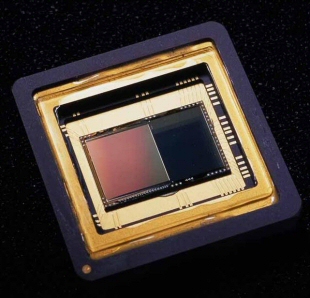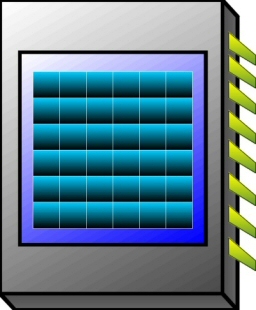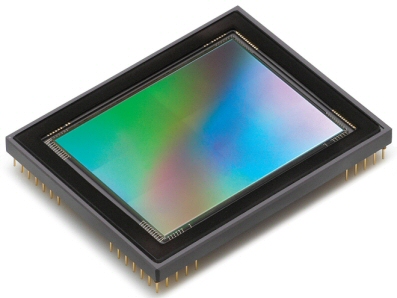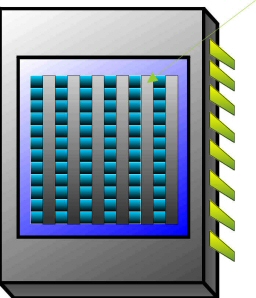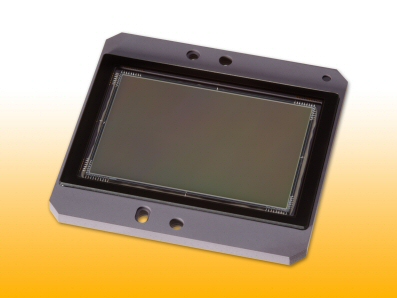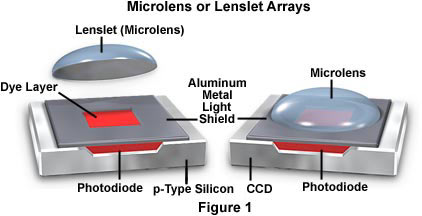Frame Transfer:
The sensor consists of two structurally identical areas: one, photon sensitive, is that where charges are collected, during the exposition; the other, masked by a metallic foil, is the memory in which the image is transferred, at the end of integration process.
These are the advantages of this way of operating:
• The radiation storing is continuous, then the system is more sensitive and it does not loose the transient events.
• The radiation storing and transferring are continuous, then one can obtain higher resolution and scan rate.
• It is not necessary an electromechanical shutter, but in some cases it is used to avoid the smearing effect.
Frame Transfer:
Questo sensore é a tutti gli effetti un doppio sensore, il primo (la parte superiore) é esposto alla luce ed é quello che cattura l'immagine, il secondo (posto al di sotto) é schermato dalla luce con una protezione metallica (Allumino).
In pratica la parte superiore si espone alla luce, ad esposizione terminata si trasferisce il suo contenuto rapidamente nella parte sottostante e successivamente puó essere campionata.
- Il vantaggio di questa tecnologia é di poter esporre e allo stesso tempo poter campionare la precedente immagine.
- Non ha necessitá di uno shutter elettromeccanico, ma per forte intensitá luminose soffre di smearing.
- Svantaggio principale che necessitá di una doppia quantitá di silicio per poter essere realizzato.
Full Frame:
This is the simplest kind of CCD sensor.
The Full-frame CCD uses the whole parallel register exposed to the photons for the shooting and only subsequently it transfers the collected charge.
For this sensor, a shutter is necessary to control the exposition and to mask the sensor to the light during the readout time to avoid the smearing effect.
Full Frame:
É sicuramente la tecnologia piú semplice, tutto il silicio é esposto alla luce, é il modello piú utilizzato in ambito scientifico.
Necessita obbligatoriamente di uno shutter per poter bloccare la luce durante il suo campionamento, se non si vuole smearing ....
Interline:
This sensor consist of a succession of columns sensitive to radiation and masked columns which are used for the charge transfer.
Mostly used for TV applications, it allows one a fast transfer of charges but it has less resolution with respect to the other kinds of sensor with the same pixel number.
D.T.A. prefers to use Full Frame sensors for its cameras, because of the clear advantages shown before, but it can mount Frame Transfer if required and for particular applications.
Interline:
É costruito alternando un colonna di pixel esposti alla luce ed una mascherata.
Una volta terminata l'esposizione il contenuto dei pixel esposti viene trasportato in quelli oscurati con una azione delle fasi molto rapida.
In pratica si costruisce in questo modo uno shutter elettronico é infatti molto veloce e riesce ad avere tempi di otturazione anche di pochi us.
Sfortunatamente la parte di silicio esposta alla luce é solo del 30% (tipico) per cui la dimensione dei pixel piccola lo relega in applicazioni dove esista abbondanza di radiazione elettromagnetica.
Gía da alcuni sono state introdotte le microlenti per aumentarne l'efficienza ma questa introduzione offre il fianco a diverse problematiche.



